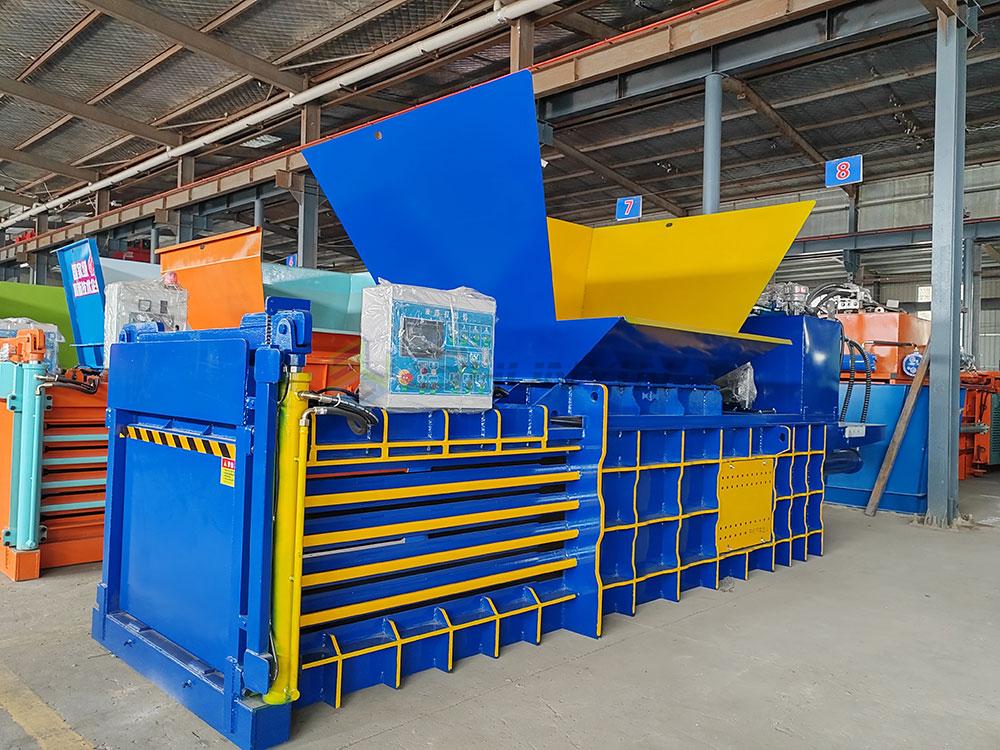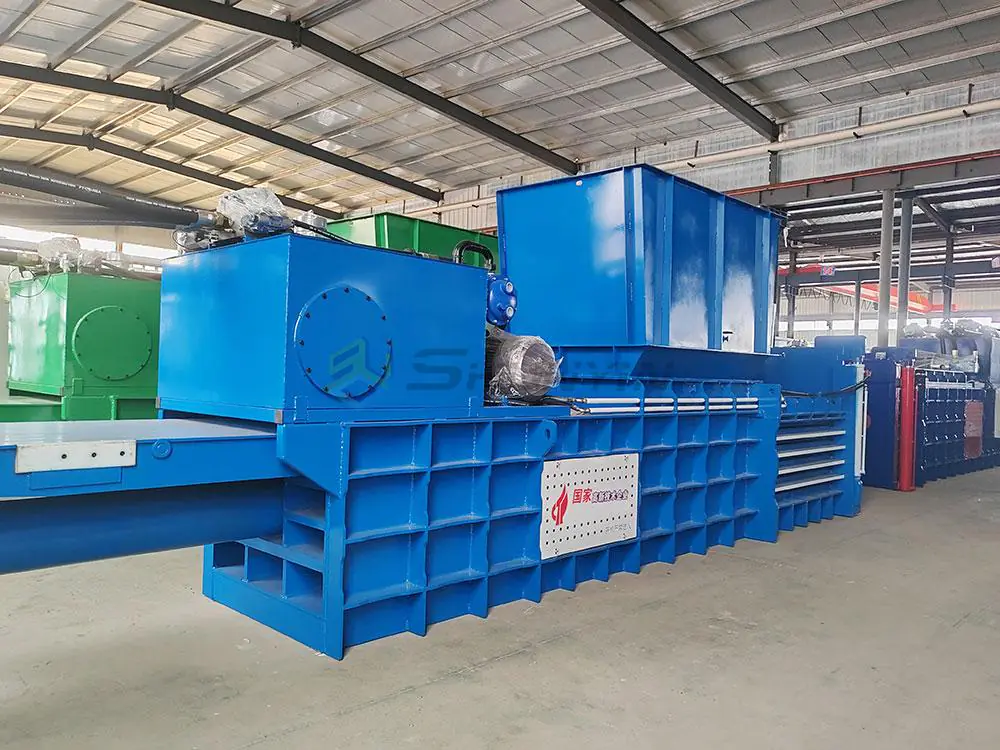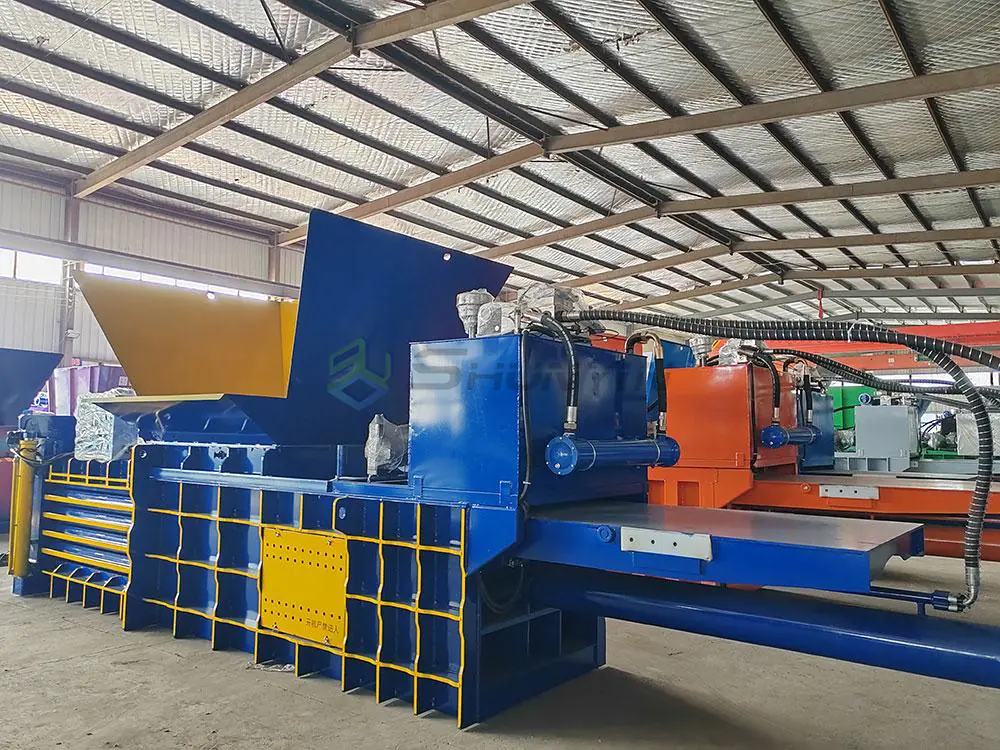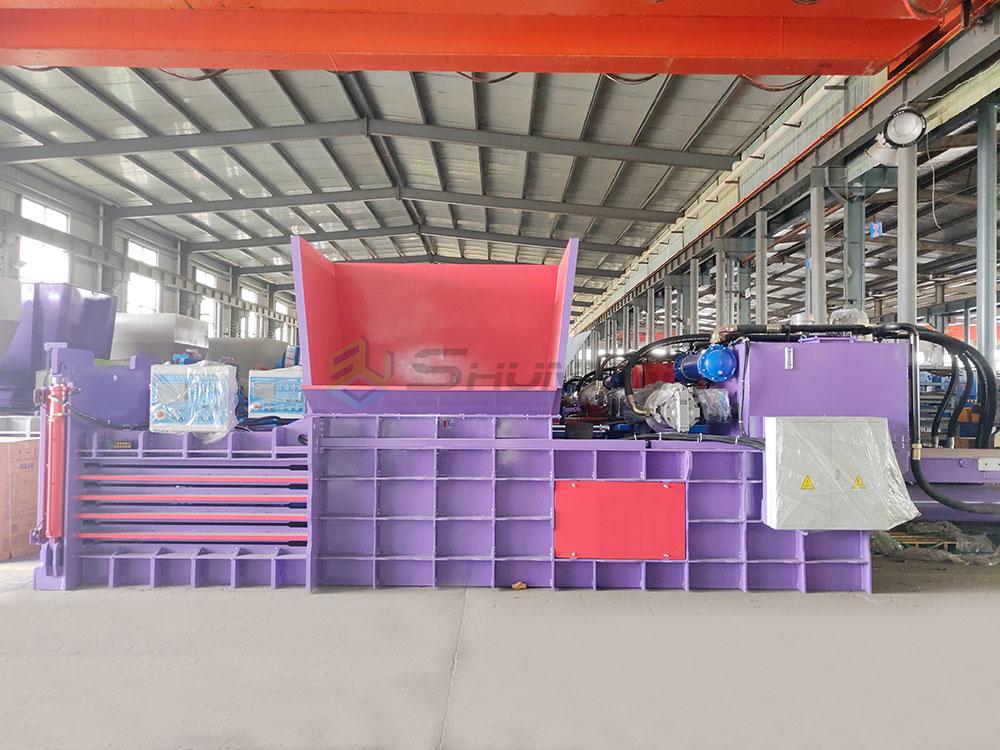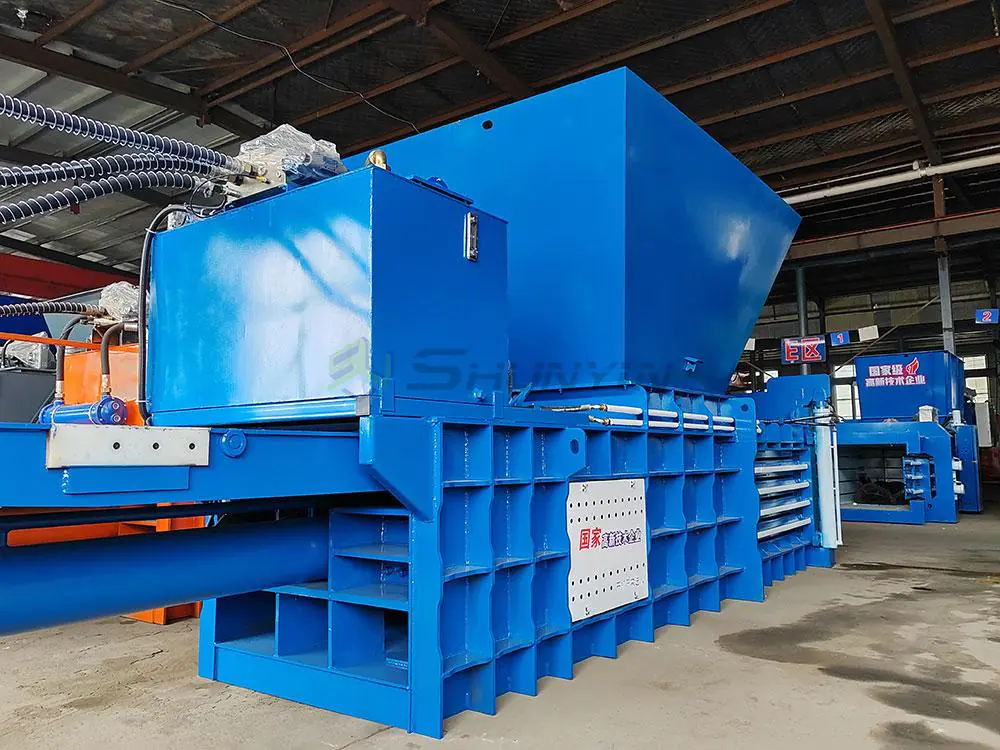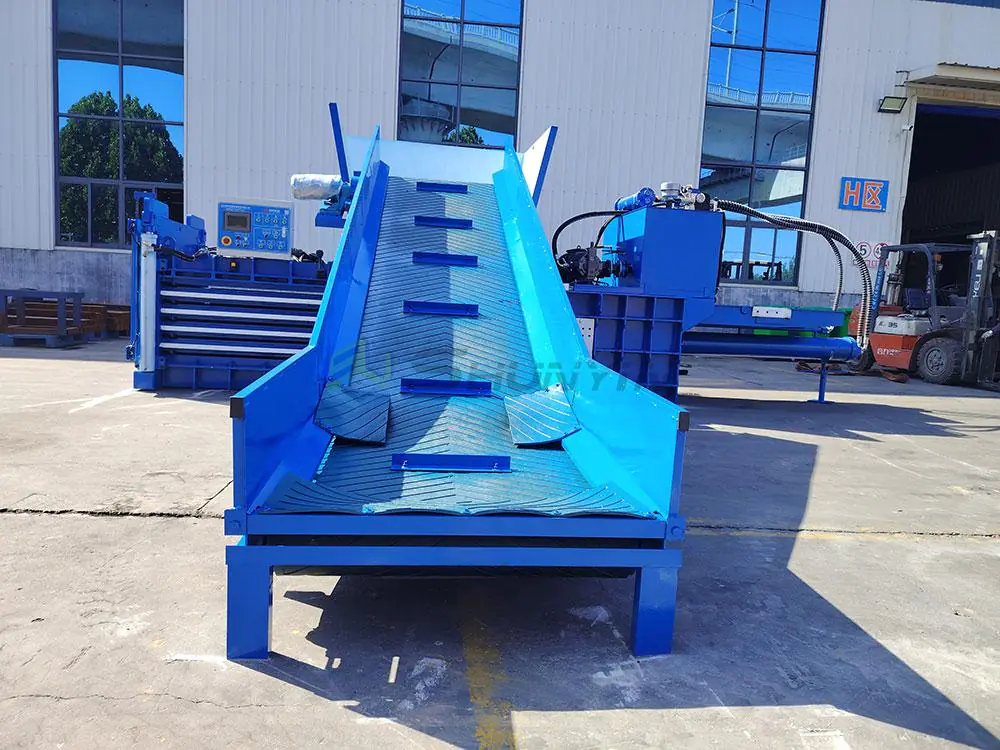Unorganized scraps crowd factory floors endlessly. Manual handling slows productivity daily. Vertical and horizontal balers transform these challenges – but you must pick wisely.
Vertical balers compact materials downward at lower capacity suited for light recycling, while horizontal units press sideways handling heavy industrial volumes with automated feeding and higher throughput.

Discover which configuration maximizes your ROI. We’ll dissect each type through real-world operational data below.
What is the difference between vertical and horizontal baler?
Mixed scrap handling reduces profits constantly. Wrong baler selection wastes capital. Know structural distinctions to match your workflow.
Vertical balers load material from top with downward pressing motion for occasional use, while horizontal units feed from side with cylinder-driven compression for continuous operation – differing in footprint, capacity, and automation.

Physical design breakdown
Core differences:
- Chamber orientation
Vertical: 5-12 feet height; Horizontal: 20-40 feet length - Loading method
Vertical: Manual top-loading; Horizontal: Conveyor-fed - Force application
Vertical: Single 15-ton cylinder; Horizontal: Multiple 50-ton cylinders
| Vertical Baler | Horizontal Baler | |
|---|---|---|
| Ideal Daily Output | <8 tons | 18-60 tons |
| Floor Space Needed | 18-35m² | 60-200m² |
| Labor Requirement | 1 operator | Auto-fed systems |
| Price Range | $8K-$35K | $55K-$220K |
Material fragmentation affects both types differently. Our engineers recommend systems based on scrap analysis. Unsure which fits? Get free application evaluation: https://lemonchiffon-shark-638535.hostingersite.com/contact/
What are vertical balers used for?
Retail backrooms overflow with boxes hourly. Light recyclables require affordable solutions. Vertical balers1 deliver compact gains efficiently.
Vertical balers compress lightweight materials like cardboard boxes, foam packaging, and plastic film into manageable bales for supermarkets, print shops, and small warehouses needing daily storage control.

Sector-specific implementations
Three primary applications:
- Retail chains
Process OCC cardboard behind stores - Light manufacturing
Bundle textile scraps and foam offcuts - Distribution centers
Handle packing materials from returns
Capacity benchmarks
Typical outputs by material:
| Material | Bale Weight | Cycle Time |
|---|---|---|
| Cardboard | 300-500kg | 4-6 min |
| PET Bottles | 180kg | 7 min |
| LDPE Film | 210kg | 9 min |
Avoid jams with thin plastics! Our vertical models feature dual pre-crushers. Processing food packaging? Easy-clean decks prevent contamination. Request hygiene specs: https://lemonchiffon-shark-638535.hostingersite.com/contact/
What are the two types of round balers?
Hay spoils during inefficient baling constantly. Variable density causes storage loss. Fixed/Variable chamber balers2 solve differently.
Fixed-chamber balers produce progressively tighter bales suited for dry hay, while variable-chamber systems adjust bale density during formation ideal for silage – differing in moisture adaptability.

Operational mechanics compared
Key functionality:
| Feature | Fixed Chamber | Variable Chamber |
|---|---|---|
| Bale Formation | Constant pressure | Adjustable compression |
| Starting Size | Full chamber | Partial expansion |
| Optimal Moisture Content | <15% | 18-25% |
| Density Range | Medium | Low-High |
Harvesting savings
Canadian farm results:
- Feed waste reduced by 40%
- Baling labor decreased 60%
- Equipment fuel costs dropped 30%
Wrapped silage needs special considerations. We offer integrated net-wrap systems. Handling organic hay? Galvanized steel prevents corrosion. See agricultural models at this address: https://lemonchiffon-shark-638535.hostingersite.com/contact/
What are the different types of hay balers?
Weather-sensitive hay requires various baling approaches. Nutrient loss occurs during suboptimal compression. Baler designs match farm-specific needs.
Square balers create stackable bricks for barn storage, round balers produce weather-resistant rolls for field exposure, and compact balers offer intermediate sizing – each optimizing moisture protection and handling method.

Design purpose analysis
Matching machine to need:
| Square Baler | Round Baler | Compact Baler | |
|---|---|---|---|
| Output Size | 40x45x100cm | 1.2-1.8m diam | 60-90cm diam |
| Storage Method | Indoor stacking | Field/outdoor | Dual-purpose |
| Density Control | Manual settings | Sensor-controlled | Preset levels |
Economic advantage matrix
Profit-impacting factors:
| Type | Resale Value Preservation | Labor Efficiency | Transport Cost |
|---|---|---|---|
| Square | $$$ | $$ | $$$ |
| Round | $$ | $$$ | $ |
| Compact | $$ | $$ | $$ |
High-moisture regions need special attention. Our round balers include moisture sensors. Custom bale dimensions? Get CAD designs for integrated farms: https://lemonchiffon-shark-638535.hostingersite.com/contact/
Conclusion
Choosing between vertical/horizontal balers depends on material volume, while hay baler selection balances preservation needs against farm logistics – both critical decisions boosting recycling profits.


